“Our weapon is public opinion”
Posters of the women’s suffrage movement at the University Library
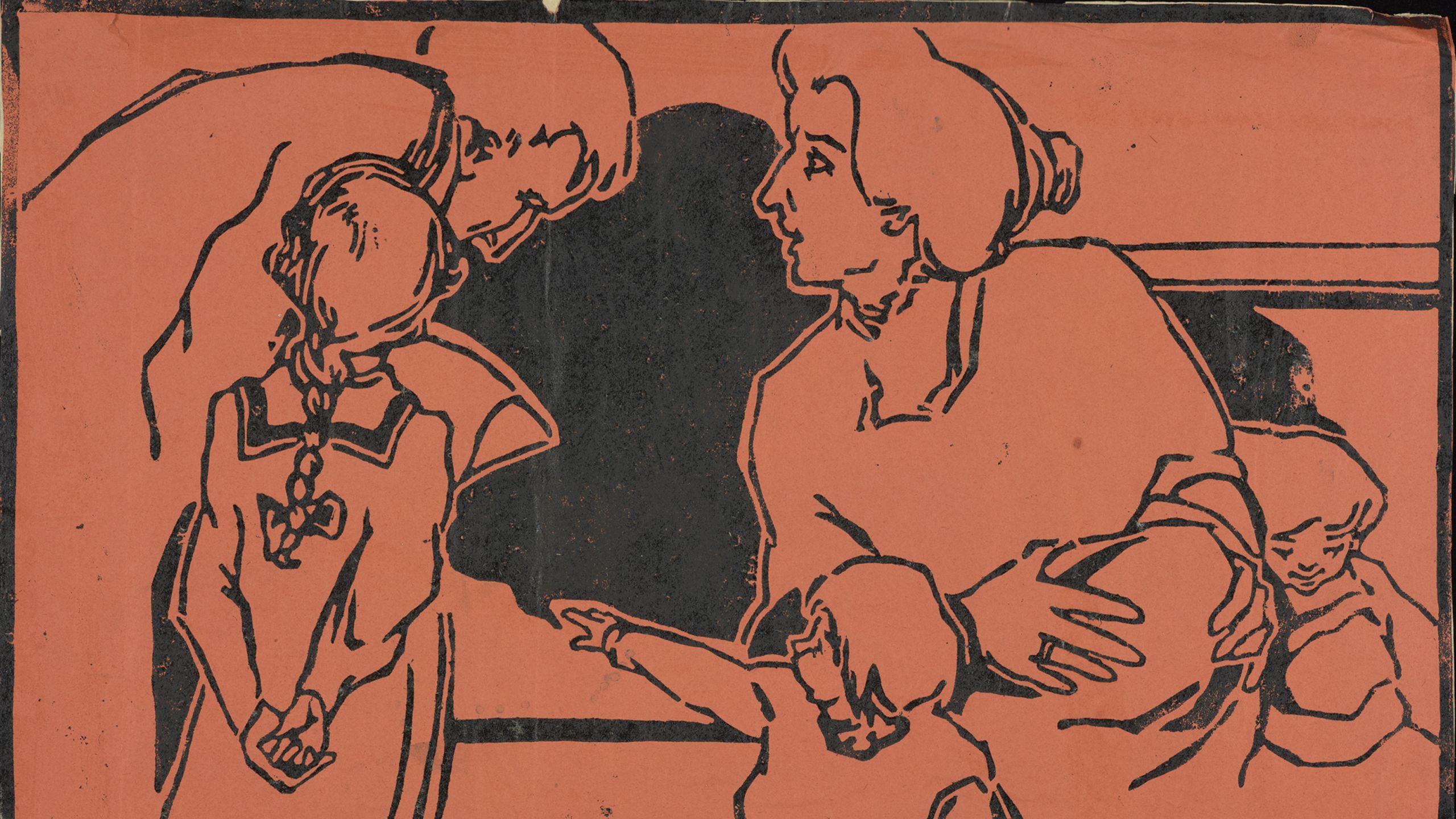
One of the largest surviving collections of suffrage posters from the early twentieth century are housed in Cambridge University Library’s famous tower.
This month, a selection will go on display for the centenary of the 1918 Representation of the People Act – the parliamentary act that finally gave some women the vote.
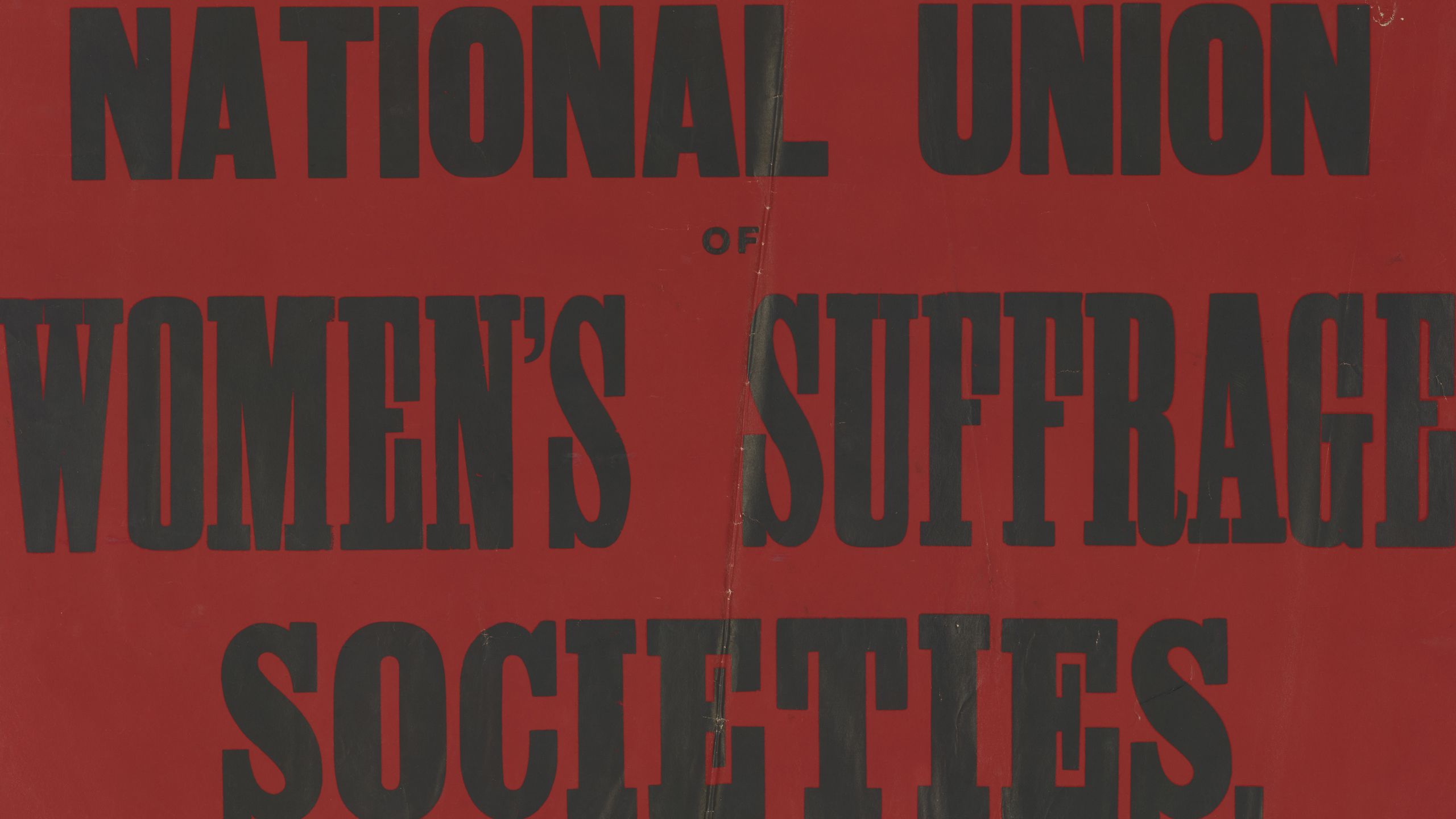
Most of the posters were sent directly to Cambridge University Library in a single bundle somewhere around 1910. The brown parcel paper in which they arrived was discovered in 2016. Addressed simply to ‘the Librarian’, the wrapping revealed the sender to be Dr Marion Phillips.
A leading figure of the suffrage movement as well as the Women's Labour League, Phillips would go on to become Chief Woman Officer for the emergent Labour Party and win the parliamentary seat for Sunderland in the 1929 general elections.
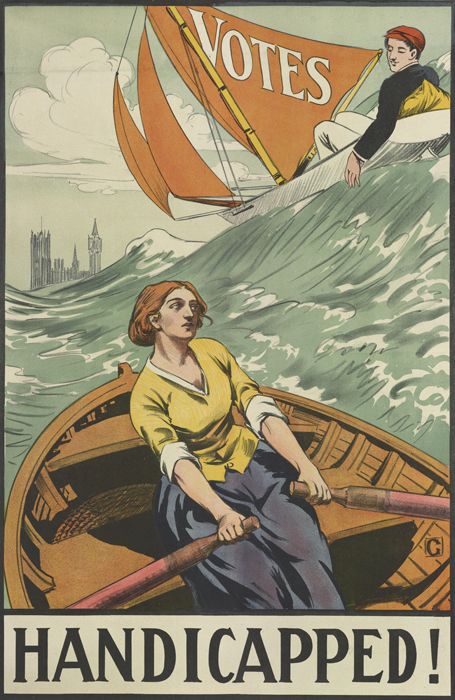
This poster was one of the most popular of the suffrage campaign. The artist, Duncan Grant, was a prominent member of the Bloomsbury Group of British painters, and came joint first in the Artists’ Suffrage League competition with this submission.
It is unknown why Phillips sent the posters to Cambridge. The Sanskrit scholar C.M. Ridding, Girton graduate and member of the National Union of Women’s Suffrage Societies, was working at the Library at the time – the first woman to be employed there – and may have encouraged the delivery.
Moreover, the then Librarian, Francis Jenkinson, was known to value “unconsidered trifles” such as flyers and postcards. He gathered a vast collection of this ‘disposable literature’ during the First World War.
While it is now relatively commonplace for contemporary ephemera to be preserved for posterity – the University Library collected local campaign materials during the EU referendum, for example – for such items to survive from a century ago is rare.
“These posters are fantastic examples of the suffrage publicity machine of the early twentieth century,” says Chris Burgess, exhibitions officer at the Library.
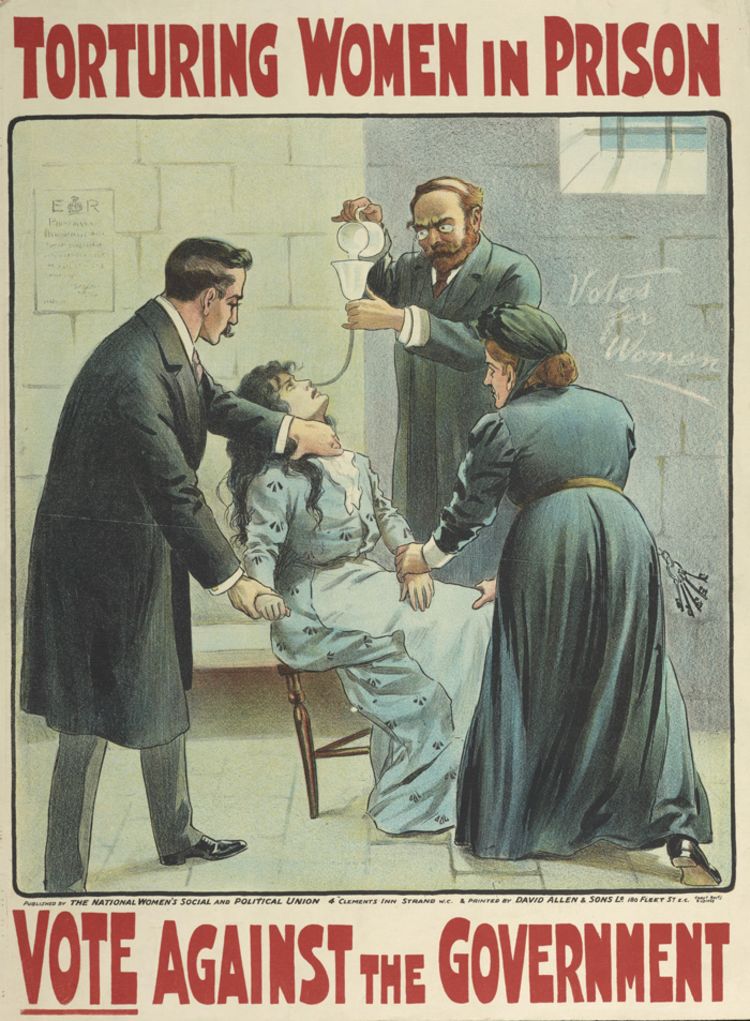
In 1909 the Home Secretary, Herbert Gladstone, ordered that imprisoned suffragettes who went on hunger strike should be force-fed. In this poster, produced in 1914 for the Women's Social and Political Union (WSPU), artist Alfred Perse captures the horror of the process.
“They were created to be plastered on walls, torn down by weather or political opponents, so it is highly unusual for this material to be safely stored for over a hundred years.”
A selection of the posters will go on display at the University Library from the 3rd February to commemorate this month’s centenary of the Representation of the People Act 1918, which gave the vote to women over the age of 30.

This poster was one of the most popular of the suffrage campaign. The artist, Duncan Grant, was a prominent member of the Bloomsbury Group of British painters, and came joint first in the Artists’ Suffrage League competition with this submission.
This poster was one of the most popular of the suffrage campaign. The artist, Duncan Grant, was a prominent member of the Bloomsbury Group of British painters, and came joint first in the Artists’ Suffrage League competition with this submission.

In 1909 the Home Secretary, Herbert Gladstone, ordered that imprisoned suffragettes who went on hunger strike should be force-fed. In this poster, produced in 1914 for the Women's Social and Political Union (WSPU), artist Alfred Perse captures the horror of the process.
In 1909 the Home Secretary, Herbert Gladstone, ordered that imprisoned suffragettes who went on hunger strike should be force-fed. In this poster, produced in 1914 for the Women's Social and Political Union (WSPU), artist Alfred Perse captures the horror of the process.
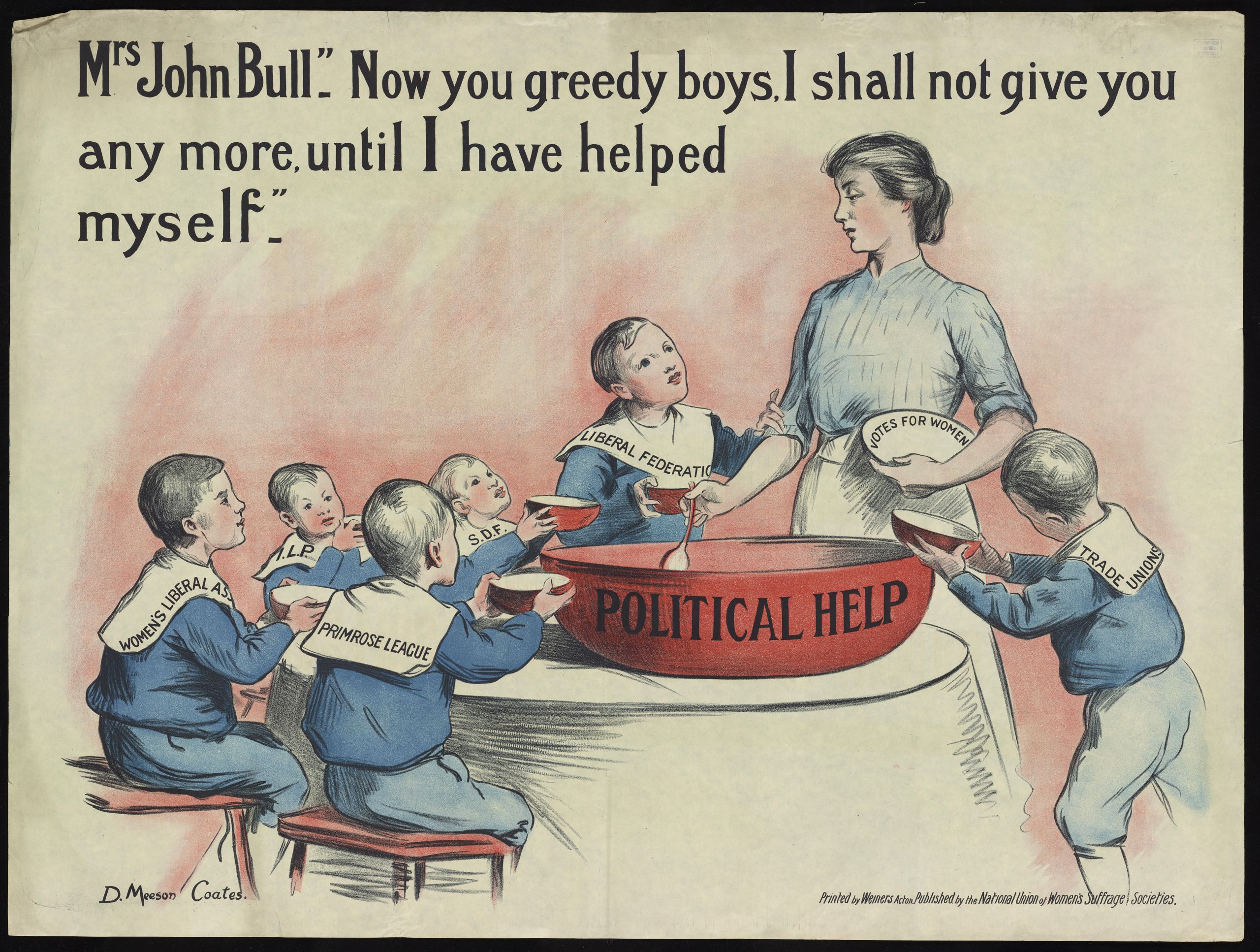
"All the organisations mentioned on the children’s bibs were linked to the major political parties of the day. And the campaigning activities of all were underpinned by women’s work. The poster argues that this support should be withdrawn until women too, could participate at the ballot box," says Library exhibition officer Chris Burgess.
"All the organisations mentioned on the children’s bibs were linked to the major political parties of the day. And the campaigning activities of all were underpinned by women’s work. The poster argues that this support should be withdrawn until women too, could participate at the ballot box," says Library exhibition officer Chris Burgess.
Some posters were for national use; others must have been taken from the Cambridge campaign, including one inviting local women and men to ‘come and sign the voters’ petition’ at the city’s St Luke’s School on Victoria Road.
Visitors to Cambridge in the early 1900s would have found suffrage stalls on the market, local organisers paid by the national campaign, and even a permanent suffrage shop on Bene’t Street selling pamphlets and tea services, says Dr Lucy Delap from the Faculty of History.
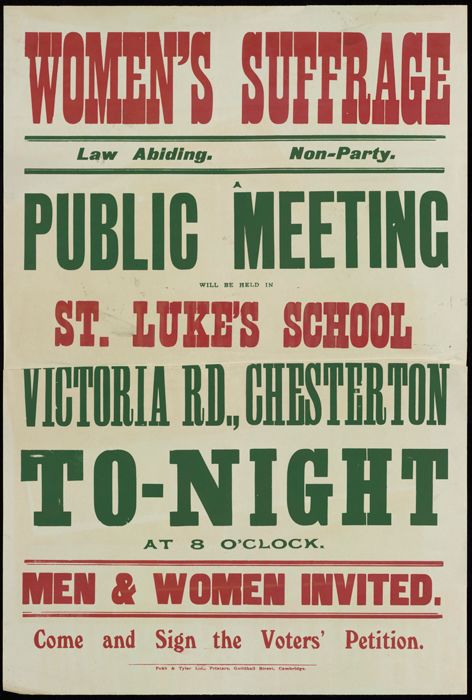
Delap, who specialises in feminist history, points out that the first women’s colleges at Cambridge – Girton (1869) and Newnham (1871) – were set up to be a “bedrock” part of the women’s movement. “These colleges hosted some of the most active suffrage societies among their student bodies,” she says.
The University, however, was far from progressive. A vote in 1897 to grant women full degrees was not only lost, but effigies of women were torched by jeering crowds of male students. Even Girton College had at least one anti-suffrage society, says Delap. Shamefully, women were not allowed to become full members of the University until 1948.
Listen to Dr Lucy Delap talk about Cambridge's women's colleges and suffrage.
In cities such as Cambridge, suffrage campaigns deliberately foregrounded women in academic dress. One poster depicts a woman in gown and mortarboard caged up with a “convict” and a “lunatic”: reminding well-to-do Fellows that their educated wives were still lumped in with society’s dregs.
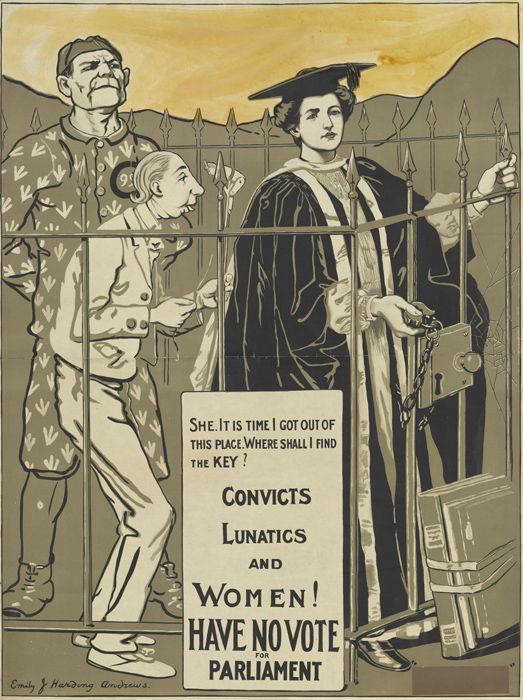


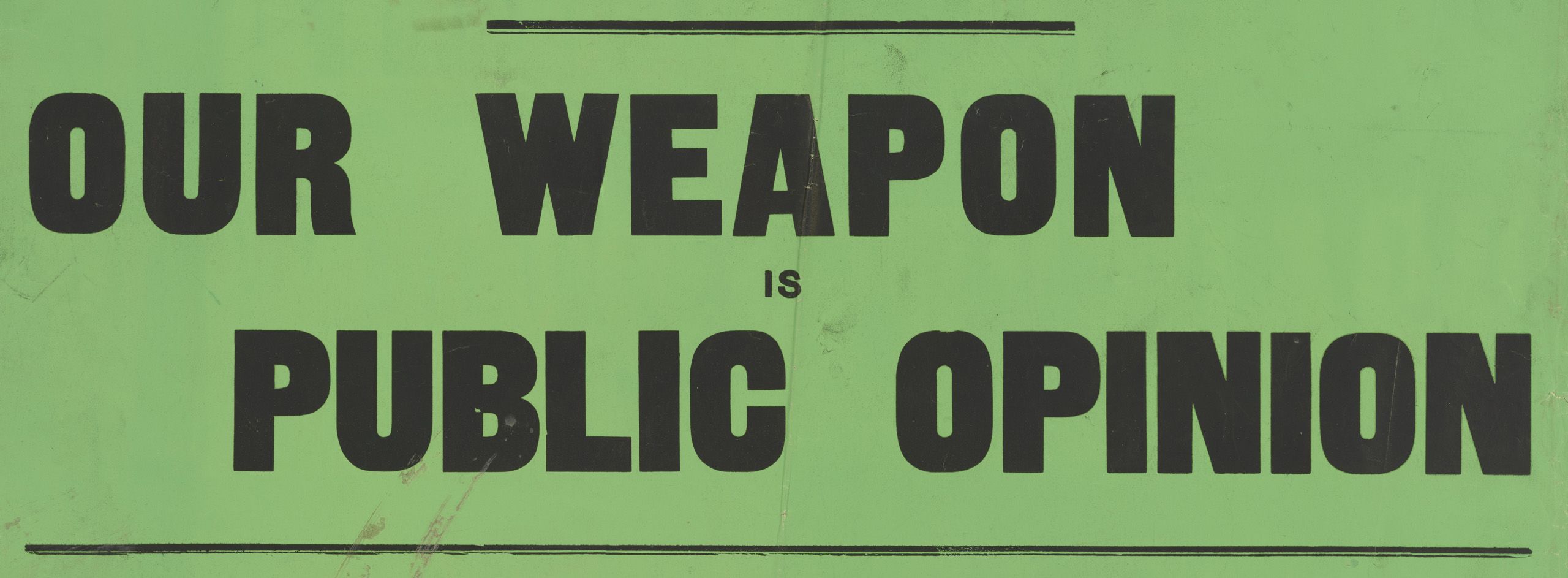
Other posters in the collection Phillips sent to the Library clearly targeted working-class women in textile factories, or making ends meet as seamstresses. “The majority opinion in the UK was against women’s votes. The suffrage movement definitely had to reach out to many women,” says Delap.
“Campaigning went far beyond the simple equality message to point out how the vote could make a difference in households, at work, on the streets – matters that concern all women.”
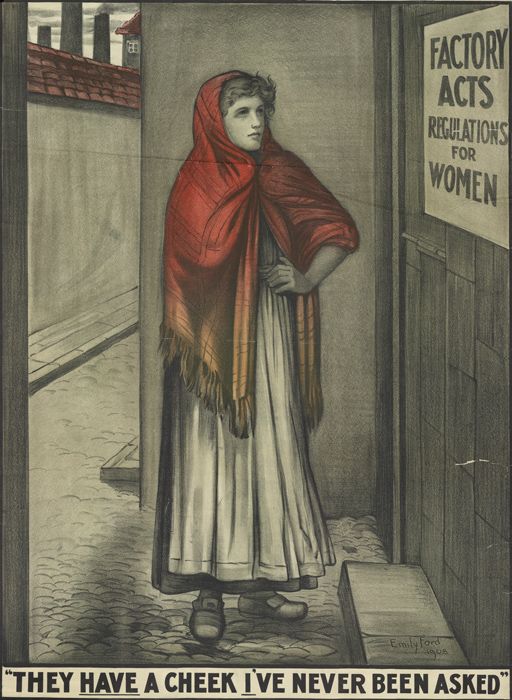
As one poster boldly states: “our weapon is public opinion,” and to win hearts and minds the movement was at the forefront of innovations in media at the time – with print production central to much of the ground campaign.
“People would be cranking out handbills to be distributed the same day through networks of sash-wearing volunteers, or printing posters advertising meetings taking place that evening,” say Delap.
“The movement adopted techniques from the tabloid press – the so-called ‘yellow press’ – using great big headlines, foregrounding visual material, whether photos or cartoons.”
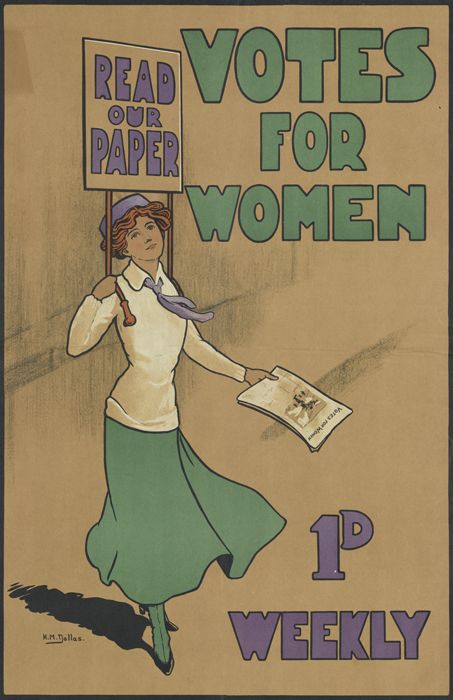
Delap describes the suffragists as media-savvy political campaigners. “If you have the visual juxtaposition of a women in academic dress who’s five foot tall getting arrested by a burly policeman – that is a picture that’s going to work for the press. They understood that, and were among the first to exploit it to the hilt.”
Listen to Dr Lucy Delap discuss come of the approaches to publicity adopted by the suffrage movement.


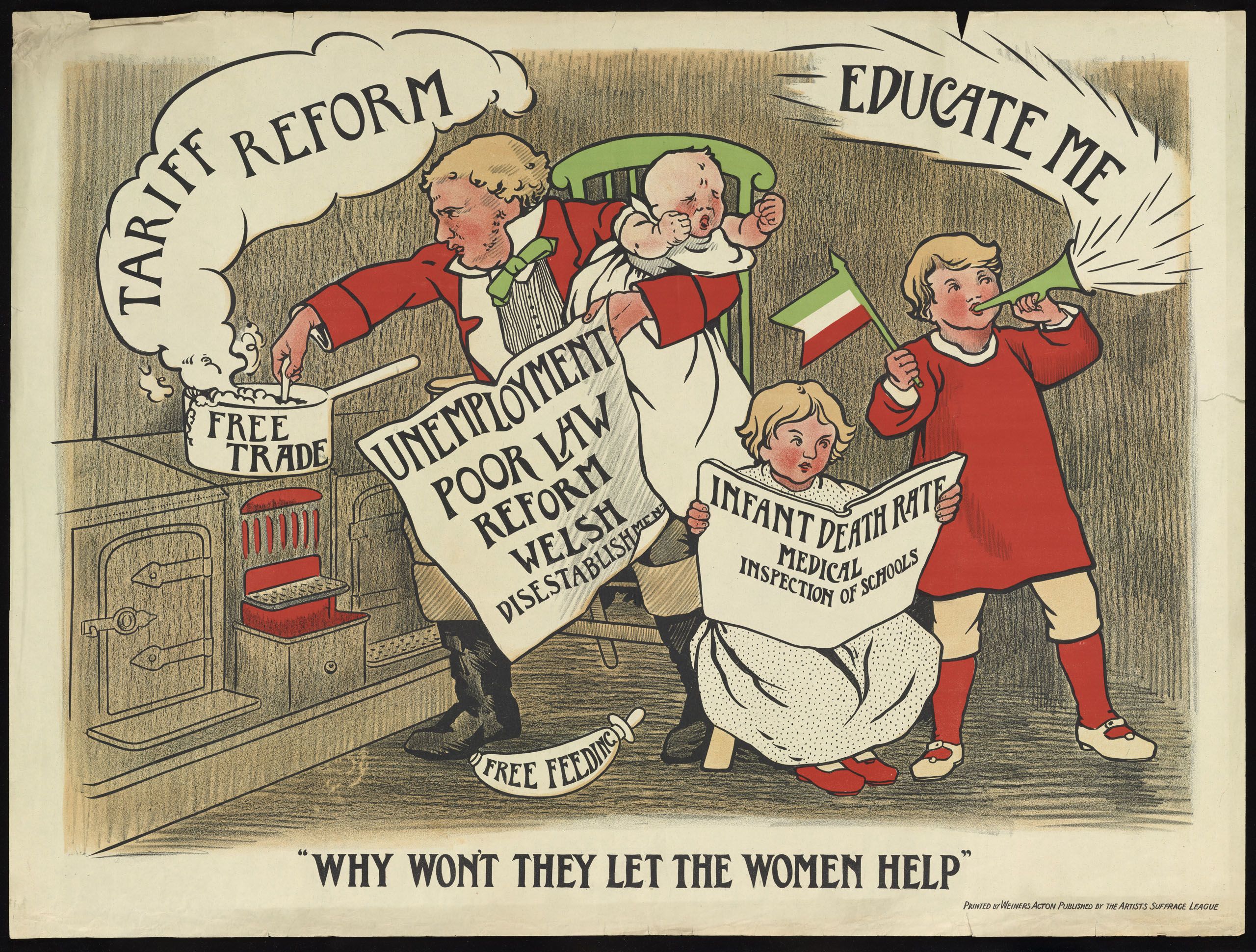
"Here John Bull, the personification of England, grapples with children and housework who represent the big issues of Edwardian Britain. The poster argues that if women could vote, then society’s problems might more easily be solved for the benefit of everyone. Political propaganda of the period separated into what was thought were women’s and men’s issues (to some extent it still does)," says Chris Burgess.
"Here John Bull, the personification of England, grapples with children and housework who represent the big issues of Edwardian Britain. The poster argues that if women could vote, then society’s problems might more easily be solved for the benefit of everyone. Political propaganda of the period separated into what was thought were women’s and men’s issues (to some extent it still does)," says Chris Burgess.
The exhibition features poster imagery by the Suffrage Atelier, founded in 1909 as ‘an arts and crafts society working for the enfranchisement of women’, and the Artists’ Suffrage League, which worked to support the National Union of Women’s Suffrage Societies from 1907.

These were networks of both professional artists and ordinary women and men, producing visuals for items such as postcards and ceramics to be distributed across the country and sold in suffrage shops.
“There’s an entrepreneurial as well as creative side to the movement – getting the message out though every medium they can as well as making money for the campaign,” says Delap.
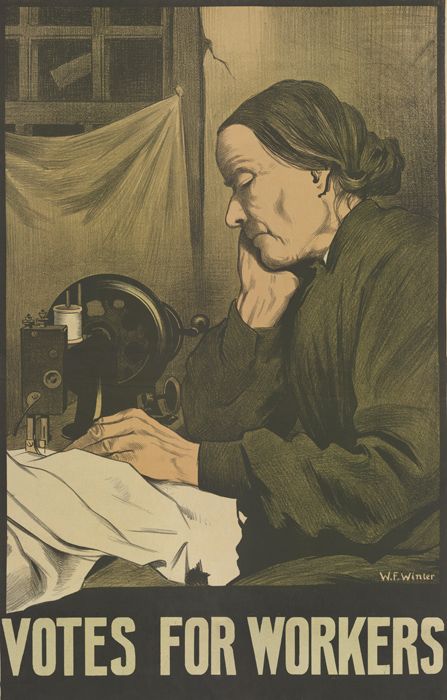
"Often suffrage imagery showed women with agency demanding the vote. However, this woman, a lone home-worker, seems not to be demanding the vote. Instead, we the viewer are asked to give democracy to her, in order that she can improve her life," says exhibition officer Chris Burgess.
Some posters explicitly call for ‘law-abiding’ meetings. Delap explains that the movement became divided on tactics, as many felt the continued denial of rights forced more drastic action.
“There were militants who were willing to break the law: smashing windows, destroying golf courses, burning buildings – in fact, one building in Cambridge was torched by suffrage protesters, on Storey’s Way.”
“There were also non-violent actions that broke the law: refusing to fill in census, refusing to pay tax without representation – a range of creative tactics,” says Delap.
“But just to stand on a box in the marketplace, as many women did, is an act that ruptured the status quo and put women’s bodies in the front line: provoking public fury, peltings with rotten vegetables and even police brutality. To be a female suffrage activist of any kind was a militant act.”
Listen to Dr Lucy Delap discuss some of the types of protest deployed during the Edwardian suffrage campaigns.
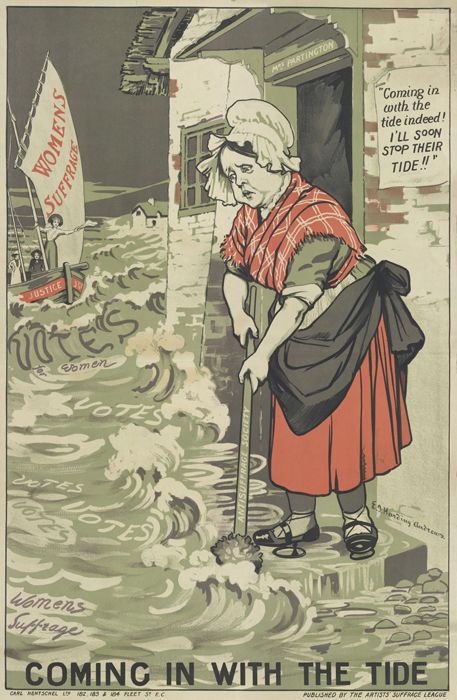
This poster depicts Mrs Partington, a familiar figure from 19th century British political satire, attempting to stem progress with her mop. "The use of caricature demonstrates how suffrage artists were using icons and symbols that would have been familiar to viewers," says Burgess.
Next year will mark 150 years since the founding of Girton College, the first Cambridge College dedicated to the education of women. Over the next two years, the University Library will conduct research on its other treasures of women’s history, hosting events and exhibitions.
During this time, Lucy Delap and others will be coordinating efforts to replace some of the longstanding and overwhelmingly male artworks displayed across collegiate Cambridge with art produced by women.
Their ambition is for every college and department to have its own area dedicated to female art. The Library will re-hang much of its art with works reflecting the past and present of women at Cambridge.
"It would be wonderful to see art produced by women celebrated more widely at Cambridge, and recognised as another side of feminist activism," says Delap.
Listen to Dr Lucy Delap discuss possible lessons from the Edwardian suffrage movement for today's feminist activists.

"Often suffrage imagery showed women with agency demanding the vote. However, this woman, a lone home-worker, seems not to be demanding the vote. Instead, we the viewer are asked to give democracy to her, in order that she can improve her life," says exhibition officer Chris Burgess.
"Often suffrage imagery showed women with agency demanding the vote. However, this woman, a lone home-worker, seems not to be demanding the vote. Instead, we the viewer are asked to give democracy to her, in order that she can improve her life," says exhibition officer Chris Burgess.

This poster depicts Mrs Partington, a familiar figure from 19th century British political satire, attempting to stem progress with her mop. "The use of caricature demonstrates how suffrage artists were using icons and symbols that would have been familiar to viewers," says Burgess.
This poster depicts Mrs Partington, a familiar figure from 19th century British political satire, attempting to stem progress with her mop. "The use of caricature demonstrates how suffrage artists were using icons and symbols that would have been familiar to viewers," says Burgess.
